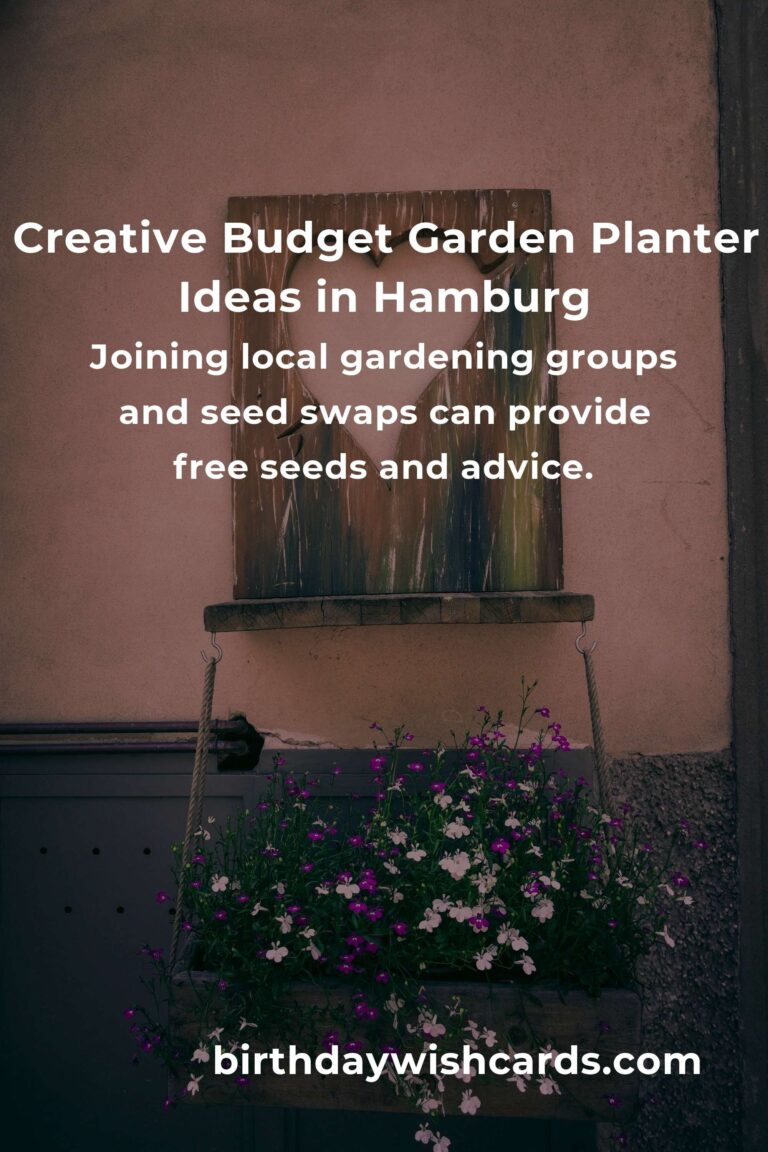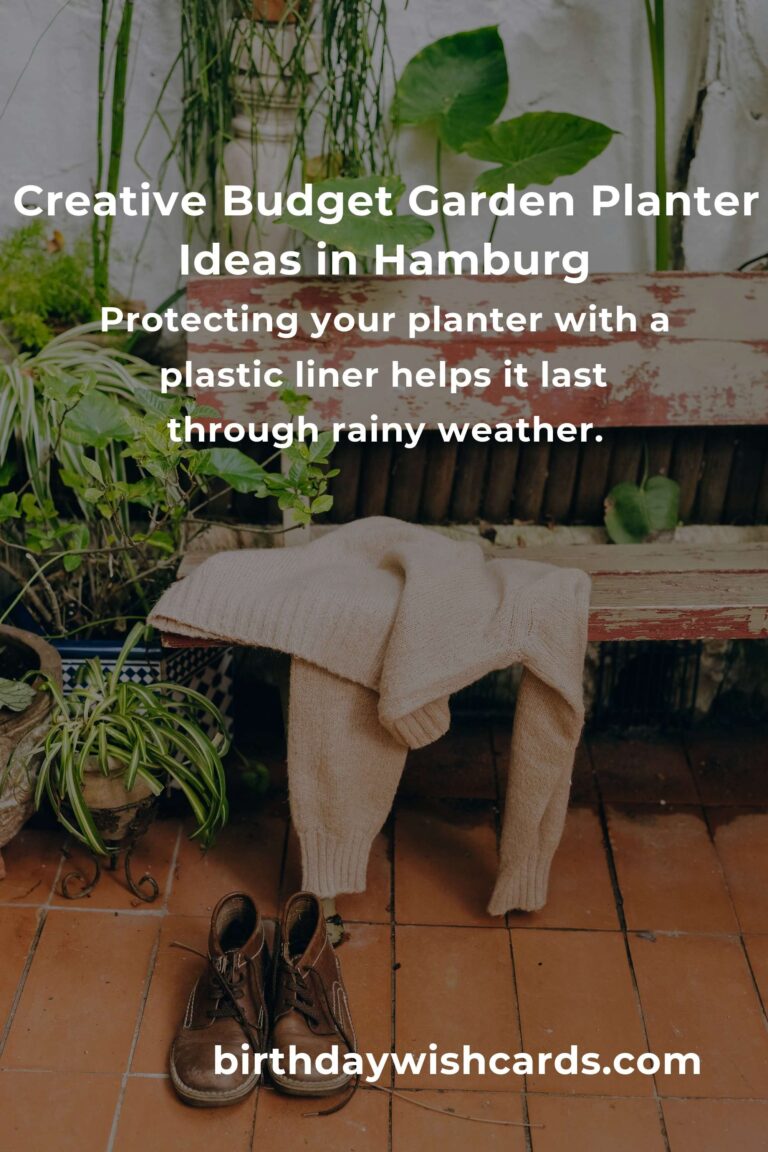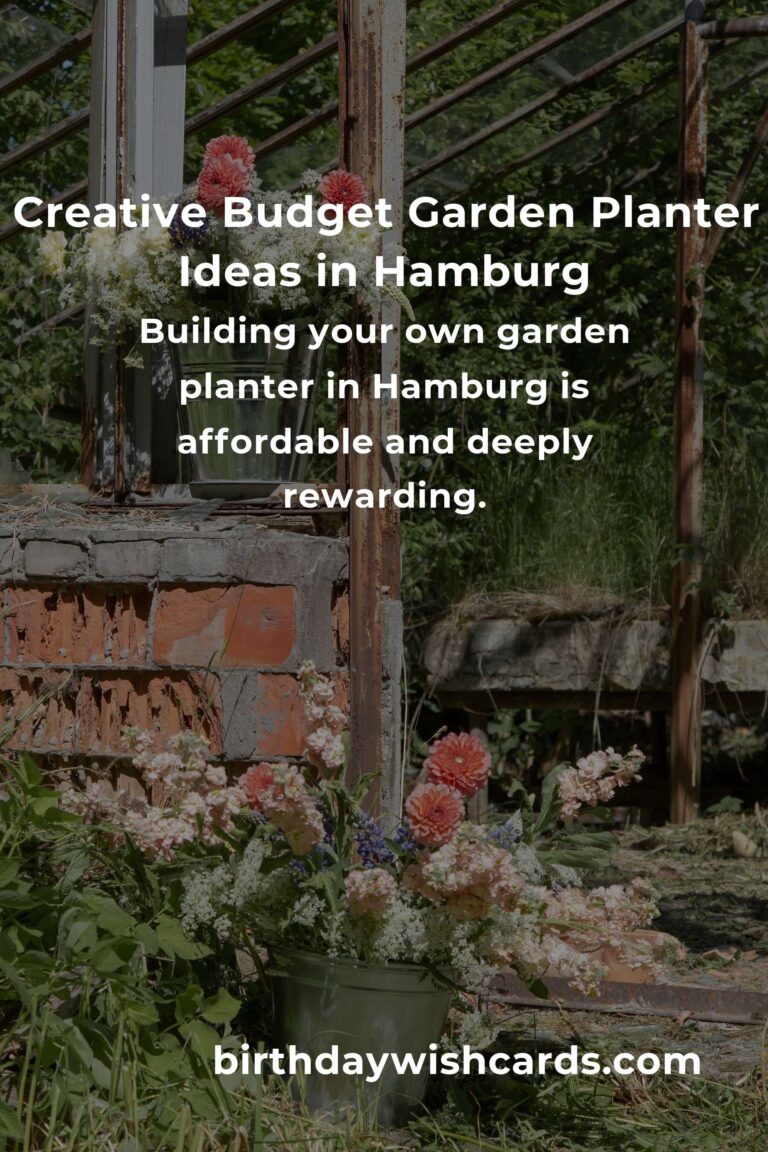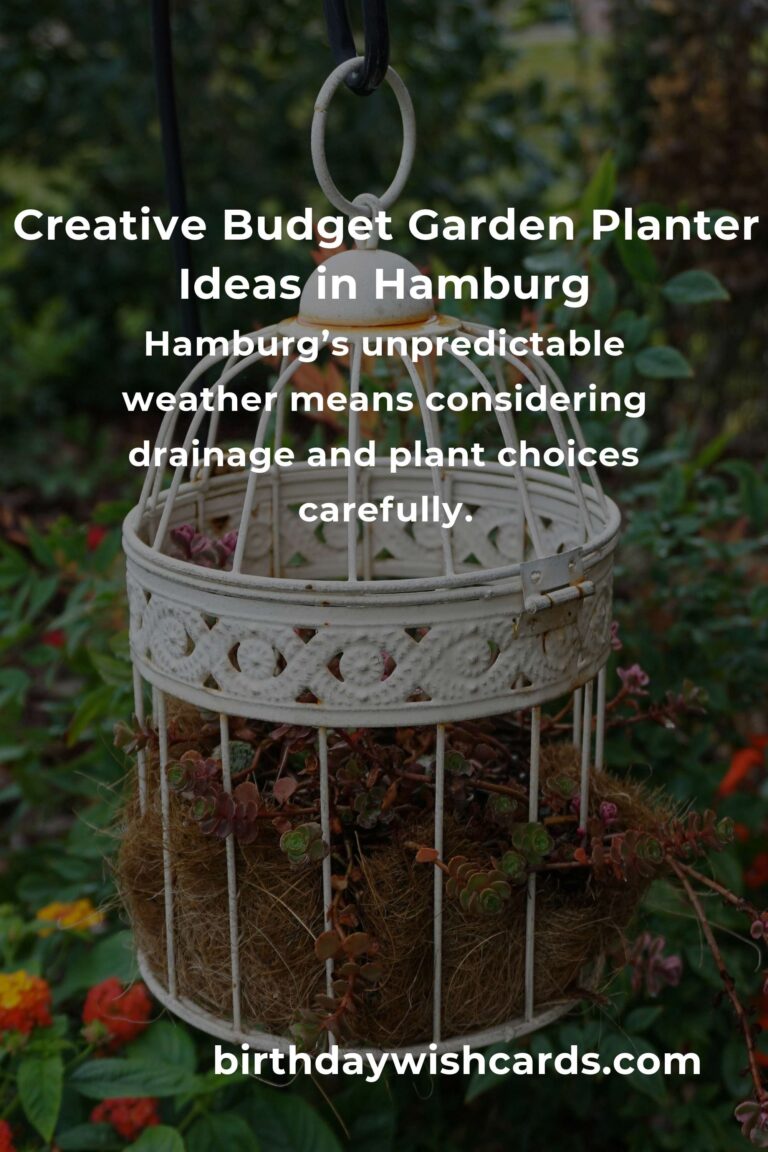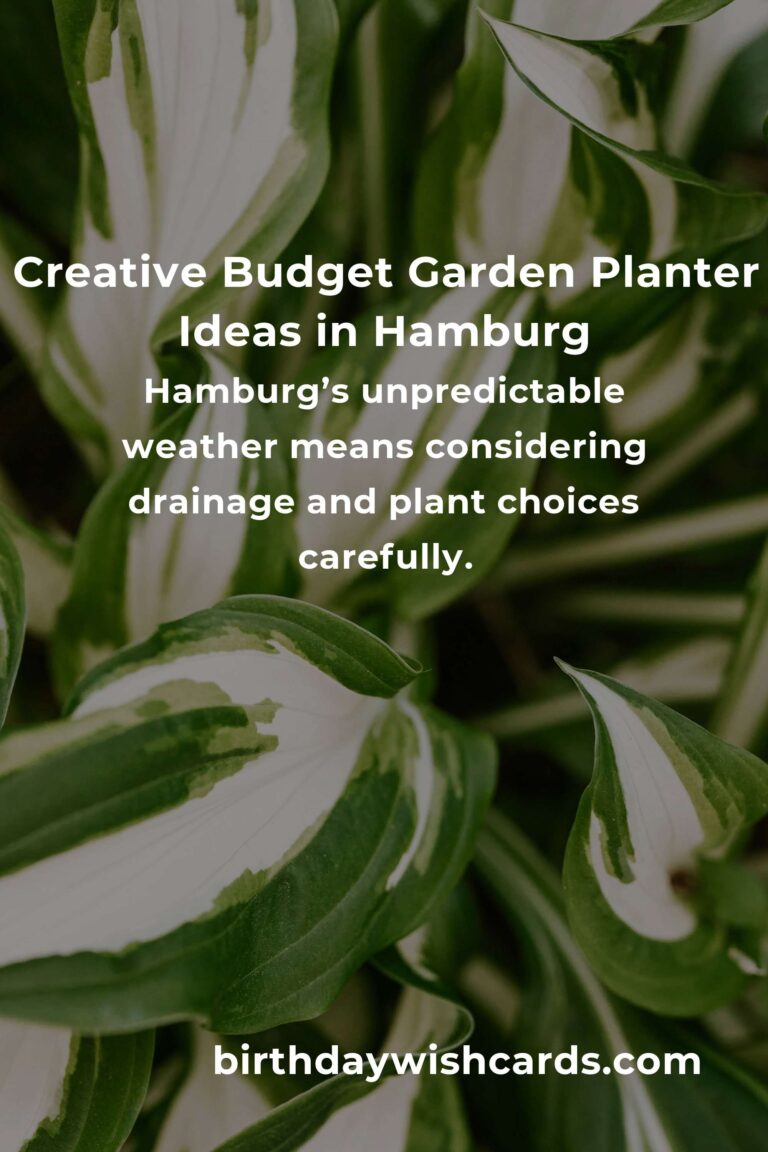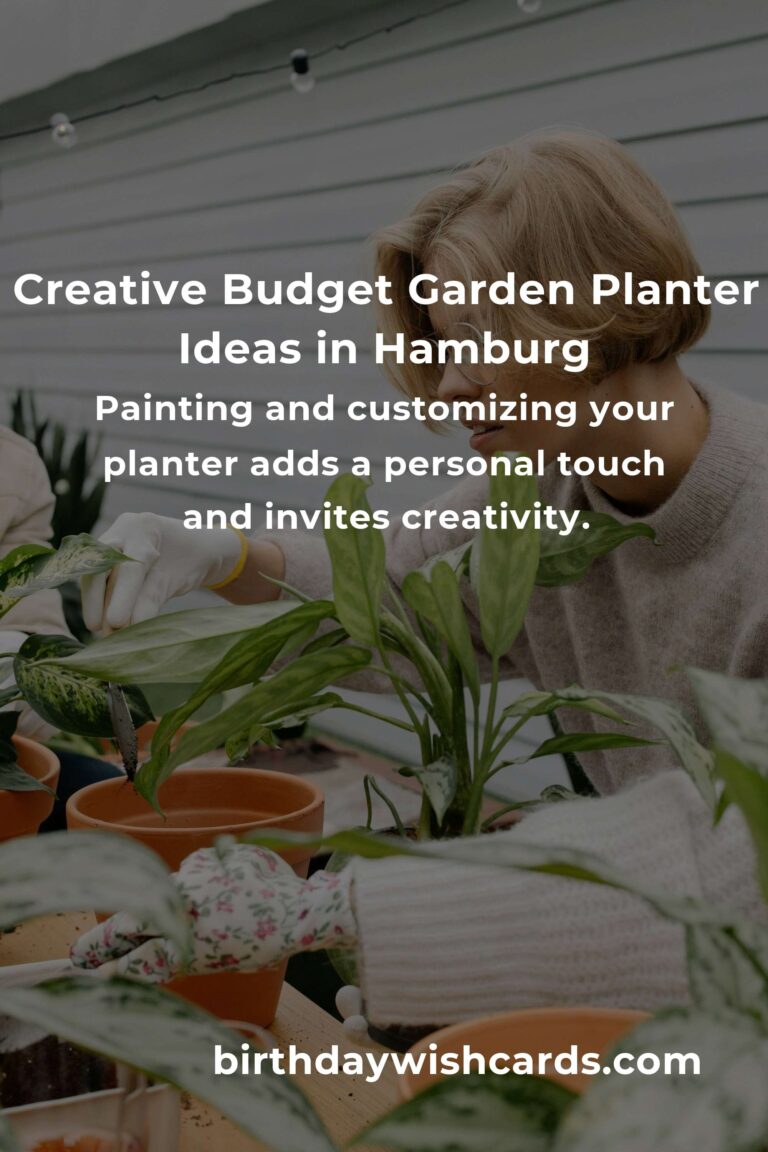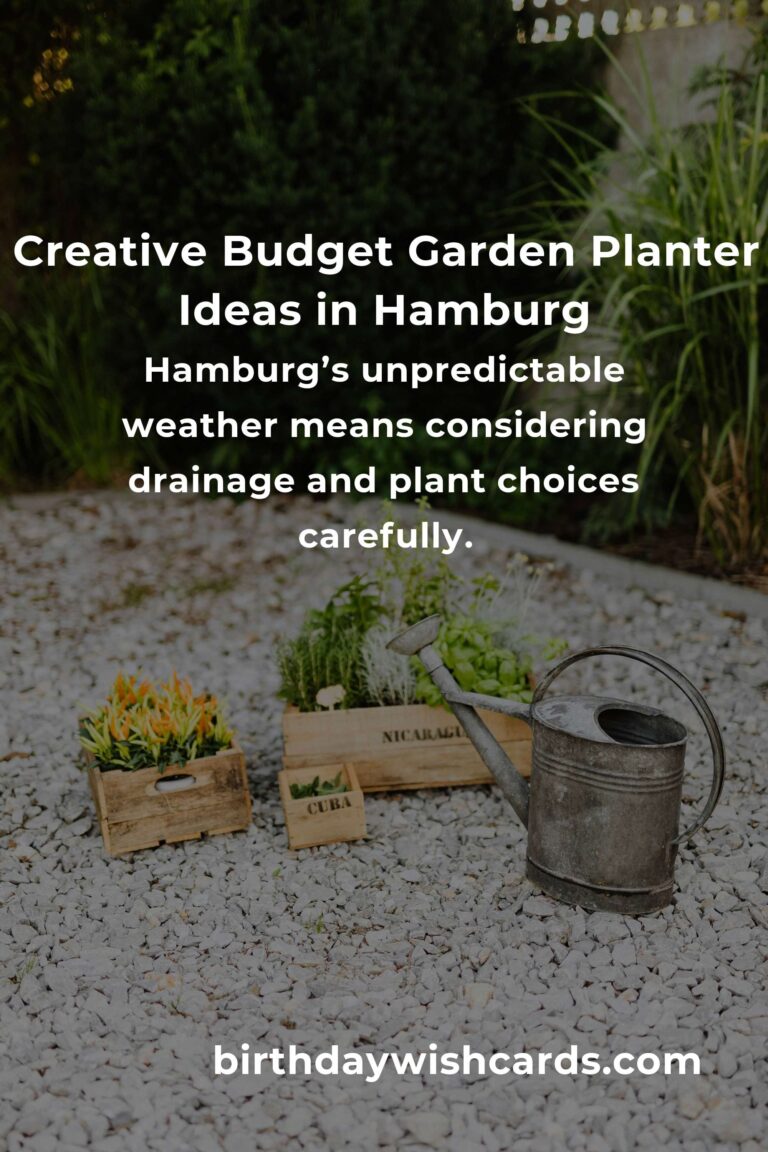
Living in the vibrant city of Hamburg, where space is often at a premium, finding ways to connect with nature can feel like a challenge. But what if you could transform even the smallest balcony or courtyard into a lush, green oasis—without breaking the bank? Building a garden planter on a budget is not only possible, but it’s also a deeply rewarding project that allows you to bring a touch of nature to your urban home. This comprehensive guide will walk you through every step, offering practical tips, local insights, and creative solutions that speak to both your wallet and your heart.
Why Build Your Own Garden Planter?
Store-bought planters can be expensive, especially in a city like Hamburg, where stylish urban living often comes with a high price tag. By building your own, you gain complete control over size, materials, and design. Plus, the process itself is a chance to express your creativity and care for the environment by using recycled materials. There’s something profoundly satisfying about nurturing a garden that you’ve created from the ground up—literally!
Planning Your Perfect Planter: Inspiration for Hamburg Dwellers
Before you start hammering away, take a moment to consider your unique space. Is it a sun-drenched balcony overlooking the Alster, a shady backyard corner in Altona, or a tiny window ledge in Sternschanze? The microclimate of your Hamburg home will influence your planter’s size, style, and the types of plants that will thrive.
Consider these factors:
- Available Space: Measure your area carefully. Even a 50cm x 20cm box can become a lush herb garden.
- Sunlight: Hamburg’s weather is famously unpredictable, so note how many hours of sun your spot receives.
- Plant Preferences: Are you dreaming of fresh herbs, cheerful flowers, or even compact vegetables?
- Budget: Set a maximum spend, keeping in mind that most materials can be sourced for free or at minimal cost.
Budget-Savvy Materials: Where to Find Supplies in Hamburg
One of the best parts about building a planter is that you can use almost anything as a container. Here are some budget-friendly sources and ideas for materials:
- Pallet Wood: Shipping pallets are often discarded by businesses around Hamburg’s port and industrial areas. Ask local shops or check online marketplaces like Ebay Kleinanzeigen.
- Old Furniture: Repurpose drawers, crates, or even broken chairs for quirky, characterful planters.
- Recycled Containers: Large yogurt tubs, buckets, or storage boxes can be painted and drilled for drainage.
- Community Initiatives: Visit Hamburg’s many repair cafés or sharing centers for donated supplies.
- Hardware Stores: For essentials like nails, screws, or paint, check local shops like Bauhaus or Obi, which often have budget sections.
Step-by-Step: Building Your Budget Garden Planter
Step 1: Gather Your Materials
- Pallet wood or recycled timber
- Saw (hand saw or electric)
- Hammer and nails, or screws and a screwdriver
- Measuring tape and pencil
- Sandpaper
- Drill (for drainage holes)
- Paint or wood stain (optional)
- Plastic liner or old plastic bags (to protect wood from moisture)
Step 2: Design and Measure
Sketch a simple design based on your space. A classic rectangular planter, approximately 60cm long, 25cm wide, and 25cm high, is perfect for balconies. Measure and mark your wood accordingly.
Step 3: Cut and Sand the Wood
Use your saw to cut the wood to size. Sand all edges and surfaces to prevent splinters and ensure a smooth finish.
Step 4: Assemble the Planter
Begin by attaching the sides to the base. Use nails or screws for a sturdy fit. Secure the end pieces, checking that everything is square. Don’t worry if it’s not perfect—imperfections add charm!
Step 5: Add Drainage
Drill several holes in the base to allow excess water to escape. Line the inside with a plastic sheet or old bag, poking holes to match the drainage. This helps protect the wood from rot.
Step 6: Customize and Decorate
Paint or stain your planter in colors that reflect your personality or match your balcony décor. Use environmentally friendly paints and let the kids help for a fun family project!
Step 7: Fill and Plant
Add a layer of gravel or broken pottery for extra drainage. Fill with good-quality potting soil, then plant your chosen herbs, flowers, or veggies. Water well and place your new garden oasis in its spot.
Budget-Friendly Plant Choices for Hamburg’s Climate
Hamburg’s weather can be cool and rainy, so choose plants that thrive in these conditions. Here are some suggestions:
- Herbs: Parsley, chives, mint, and thyme are resilient and perfect for local cuisine.
- Flowers: Pansies, marigolds, and petunias add color from early spring to late fall.
- Vegetables: Leafy greens like spinach and lettuce do well in shallow planters.
- Strawberries: Compact and productive, great for balconies.
Tips for Gardeners on a Budget in Hamburg
- Seed Swaps: Join local gardening groups or visit community gardens for seed exchanges.
- Composting: Make your own compost from kitchen scraps to enrich your soil for free.
- Upcycling: Get creative with containers—old boots, tea tins, or baskets can make unique planters.
- Water Wisely: Collect rainwater in a bucket to water your plants and save on bills.
Where to Find Community and Support in Hamburg
Gardening is more fun when shared! Hamburg has a thriving urban gardening scene. Check out these local resources:
- Prinzessinnengärten: Community gardens that offer workshops and meetups for all ages.
- Urban Gardening Hamburg: Online forums and Facebook groups for questions, advice, and events.
- Stadtgrün: City-sponsored initiatives to green public spaces—great for inspiration!
Embracing the Joy of Urban Gardening
Building a garden planter on a budget in Hamburg is more than just a DIY project—it’s an act of hope and creativity. It’s a way to reclaim a little piece of nature, reduce stress, and bring the community together. Every seed you plant is a promise for the future, and every bloom a quiet revolution against the grayness of city life.
So whether you’re a seasoned green thumb or a nervous first-timer, roll up your sleeves and give it a try. Your planter doesn’t have to be perfect. In fact, its quirks and homemade charm will make it even more special. Start small, dream big, and let your corner of Hamburg bloom!
Frequently Asked Questions
1. Do I need special tools to build a planter?
No, you only need basic tools like a saw, hammer, nails, or screws. Borrow from friends, or check local sharing centers.
2. What if I don’t have a balcony?
Even a sunny windowsill can host a mini planter with herbs or small flowers.
3. How can I protect my wooden planter from Hamburg’s rain?
Use a plastic liner inside the planter and choose outdoor wood stain or paint.
4. Are there legal restrictions for balcony planters?
In most cases, as long as planters are safe and don’t hang over the street, they’re allowed. Check your building’s rules to be sure.
5. Where can I find free or cheap plants?
Local gardening groups, seed swaps, or community gardens often give away cuttings or seedlings.
Final Thoughts: Growing More Than Just Plants
Creating a garden planter on a budget in Hamburg is about more than saving money—it’s about cultivating beauty, joy, and resilience in your own urban space. Every step, from sourcing materials to watching your first sprout unfurl, is a celebration of resourcefulness and connection. So go ahead—plant your dreams, nurture your passions, and watch your Hamburg home blossom.
Building your own garden planter in Hamburg is affordable and deeply rewarding.
You can use reclaimed materials like pallet wood or old furniture to save money.
Even small spaces, such as balconies or window sills, can host thriving mini gardens.
Hamburg’s unpredictable weather means considering drainage and plant choices carefully.
Joining local gardening groups and seed swaps can provide free seeds and advice.
Painting and customizing your planter adds a personal touch and invites creativity.
Protecting your planter with a plastic liner helps it last through rainy weather.
Reusing household containers as planters is eco-friendly and cost-effective.
Rainwater collection helps save on water bills and is better for plants.
Creating a garden planter fosters a sense of community and personal joy in urban life.
#HamburgGardening #BudgetDIY #UrbanGreen #PlanterProject #EcoFriendly #GardenOnABudget #UrbanJungle #BalconyGarden #SustainableLiving #CommunityGarden


